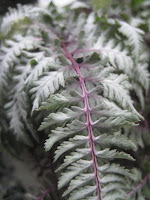 |
| Photograph by Paul Gellatly |
 |
| (Purple Crocus) Photograph by Paul Gellatly |
The season has pretty much come to an end here in Toronto, The fall mum's are flowering, the leaves on the trees have changed, many already bare... ready to usher in winter. There are still a few things you can do to prepare your beds for the season ahead, and get a jump start on your 2013 garden... by planting some bulbs now.
 |
| Photo by Paul Gellatly |
When bulbs begin flowering it signals the start of the gardening season ahead.
Bulbs are an easy way to add a welcome splash of colour after a cold winter. All bulbs come with planting instructions when purchased; make sure to read the packaging carefully for depth, height, and flowering time. Extend your spring garden by planting early, mid, and late flowering bulbs.
The selection of bulbs on the market is vast. There are many types in any colour you can imagine. It would be impossible to cover all of the bulbs available to you in a blog entry, but here's a few to get you started.
 |
| (Daffodil) Photo by Paul Gellatly |
I have never been partial to yellow flowers, however an exception has to be made for the daffodil (Narcissus) family. There are so many great varieties available. The Narcissus is often used in naturalized settings, as they spread to form beautiful masses of yellow or white blooms.
 |
| (Hyacinth) Photo by Paul Gellatly |
If its a sweet smell you're after, you can't beat the hyacinth flower for fragrance. Normally found in shades of white, purple, and pink, you are sure to enjoy these in blooms from the moment they first open.
Grape Hyacinths are a great addition to any garden or spring planter, with low clusters of blue, white, and even pink flowers, they're sure to work with any colour scheme. The foliage of these flowers also grows in the fall, and can provide a glossy grassy green colour to your fall beds. The grape hyacinth is also frequently used as a naturalizing bulb.
 |
| (Grape Hyacinth) Photo by Paul Gellatly |
 |
| (Allium) Photo by Paul Gellatly |
One of my all-time favorite spring bulbs has to be the allium, although the leaves are rarely attractive, the tall purple, white, or yellow ball is sure to catch your eye. Ranging in size from 6 inches to 4 feet in height, and bloom size from 1" to 8" or greater, there are many area's of the garden that allium can be utilized.
Another bulb worth considering is the fritillaria. Be careful where you plant the bulb as the plant/bloom has a strong odour likened only to that of a skunk. Growing up I remember my father had one planted right outside the front door... maybe not the best location... But bloom on this plant is definitely worth it! Usually found in orange or yellow, a tall plant and flower, they're great for the middle to back of a flower bed. When planting the fritillaria, you will notice an indent in the bulb, I would recommend planting this bulb on its side, to avoid water rotting out your bulb
 |
(Galanthus-Snow Drop)
Photo by Paul Gellatly |
The Snow-drop is usually the first flower in the garden, often blooming when there is still snow on the ground. A sure sign that spring has arrived. The small white and green flowers hang throughout the garden like small lanterns.
 |
| Yellow Crocus Photo by Paul Gellatly |
The Crocus is one of my favorite bulbs. Great for the edge of a garden, the cheerful blooms are one that I believe should be in every spring garden. Found normally in shades of white, yellow and purple, this bulb is a great addition to the front of your flower bed.
 |
| (Tulip) Photo by Paul Gellatly |
Finally the tulip. Tulips have become an integral part of the spring garden, offering more varieties than any other spring bulb. Ranging in colour from red, yellow, white, purple, orange, black and everything in between, from heights of 2 inches to 3 feet, no spring garden is complete without a few pockets of tulips.
 |
| (Tulip) Photo by Paul Gellatly |
As a general rule, unless you're dealing with a formal bed, it is always good to plant bulbs in odd numbers. I don't tend to plant less than 7 bulbs in close proximity if you want to create a strong impact. Plant early, mid and late season tulips so you can enjoy these beautiful flowers throughout the spring.
A couple of things to consider when planting, is as a rule, the point on the bulb goes up. Make sure to purchase a box of bone meal, to spread over the surface of the soil and lightly rake over. This will deter squirrels from digging up your bulbs, and will provide nutrients to the plant in the spring.
Head out to your local garden centre and pick up some bulbs, you'll thank me next spring!
 |
| (Crocus) Photograph by Angel W. |




















































